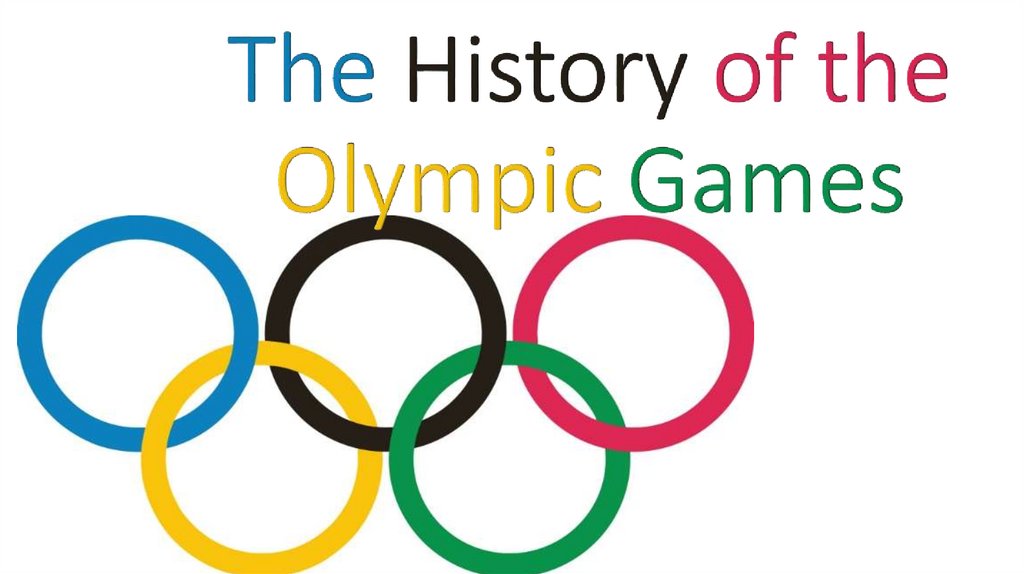Introduction to the Olympic Games
The Olympic Games, often simply referred to as the Olympics, represent one of humanity’s most enduring and celebrated traditions. They embody the spirit of competition, unity, and excellence, drawing athletes from around the world to compete in a variety of sports. Originating in ancient Greece over 2,700 years ago, the Olympics have evolved into a modern spectacle that captivates billions. This article delves into the rich history of the Olympics, the structure and details of its games, the cultural significance, the various sports involved, the hosting process, controversies, and future prospects. By examining these facets, we gain a deeper understanding of how the Olympics transcend mere athletic contests to become a symbol of global harmony and human achievement.
The term “Olympic” derives from Olympia, a sanctuary in ancient Greece where the games were first held. These ancient competitions were religious festivals honoring Zeus, the king of the Greek gods. In the modern era, revived in 1896 by Pierre de Coubertin, the Olympics have grown to include summer and winter editions, Paralympics, and youth games. The core philosophy remains: “Faster, Higher, Stronger – Together,” emphasizing not just physical prowess but also international cooperation.
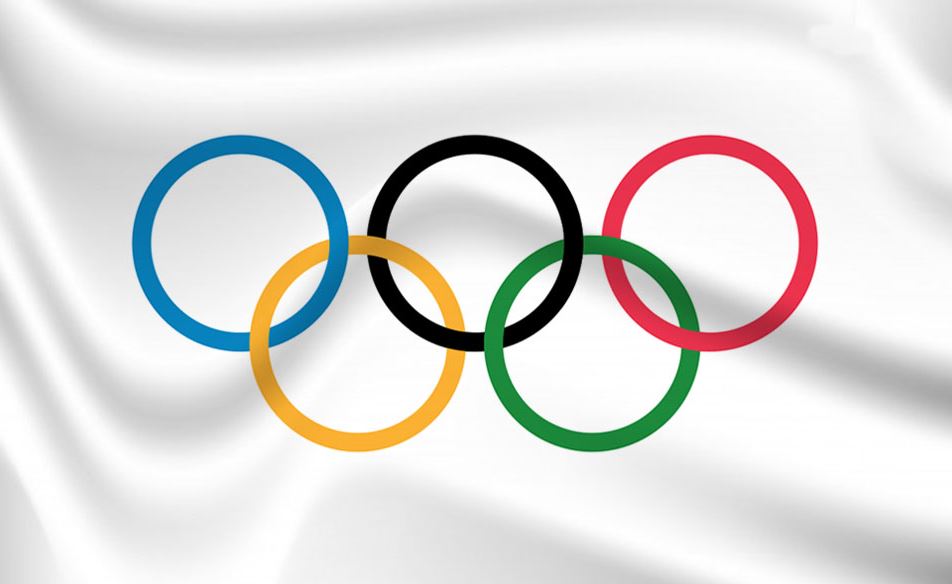
The Ancient Olympic Games: Origins and Evolution
The roots of the Olympic Games trace back to 776 BCE in Olympia, located in the western Peloponnese region of Greece. According to legend, the games were founded by Heracles (Hercules in Roman mythology) as part of his twelve labors, or alternatively, by Pelops, a mythical king who won a chariot race to claim his bride. Historical records, however, suggest the games began as a footrace dedicated to Zeus, held every four years in a cycle known as an Olympiad.
The ancient Olympics were deeply intertwined with religion. Olympia housed the Temple of Zeus, which contained one of the Seven Wonders of the Ancient World: a massive statue of Zeus crafted by Phidias from gold and ivory. Athletes competed nude, symbolizing equality and purity, and swore oaths before the statue to uphold fair play. Women were generally barred from participating or even attending, though exceptions existed, such as for priestesses of Demeter.
The initial event was the stadion, a sprint of about 192 meters (the length of the stadium). Over time, the program expanded. By the 5th century BCE, it included:
- Running Events: The diaulos (double stadion), dolichos (long-distance race, up to 4,800 meters), and hoplitodromos (race in armor).
- Combat Sports: Boxing (pugmachia), wrestling (pale), and pankration (a brutal mix of wrestling and boxing, where only biting and eye-gouging were forbidden).
- Equestrian Events: Chariot races (tethrippon for four horses, synoris for two) and horse racing.
- Pentathlon: A five-event competition comprising discus throw, javelin throw, long jump, stadion, and wrestling.
The games lasted five days, beginning with sacrifices and oaths, followed by competitions, and ending with feasts and victory ceremonies. Winners received olive wreaths from the sacred tree in Olympia, but their hometowns often bestowed greater honors like statues, free meals for life, and tax exemptions.
The ancient Olympics flourished for over a millennium, peaking during the Classical period when they attracted up to 40,000 spectators. They promoted pan-Hellenic unity amid city-state rivalries. A sacred truce (ekecheiria) ensured safe travel for participants, halting wars temporarily.
Decline set in with Roman conquest. Emperor Theodosius I banned pagan festivals in 393 CE, ending the games after 293 Olympiads. Olympia fell into ruin, buried by earthquakes and floods until excavations in the 19th century revived interest.
Revival and the Birth of the Modern Olympics
The modern Olympic Games owe their existence to Pierre de Coubertin, a French educator inspired by ancient ideals and contemporary sports movements. In the late 19th century, archaeological discoveries at Olympia fueled romanticism about Greek heritage. Coubertin believed sports could foster international understanding and moral education, countering the ills of industrialization.
In 1894, he convened the International Athletic Congress in Paris, where delegates from 12 nations voted to revive the Olympics. The first modern Games were held in Athens in 1896, with 241 athletes from 14 countries competing in 43 events across nine sports: athletics, cycling, fencing, gymnastics, shooting, swimming, tennis, weightlifting, and wrestling.
The 1896 Games were a success, highlighted by Spyridon Louis’s marathon victory, evoking ancient heroism. Women were excluded initially, aligning with ancient traditions, but this changed in 1900.
Early modern Olympics faced challenges. The 1900 Paris and 1904 St. Louis Games were overshadowed by world’s fairs, leading to disorganization. The 1908 London Games introduced the standard marathon distance of 42.195 kilometers, set to end at Windsor Castle for royal viewing.
World Wars interrupted the Games: 1916 (Berlin), 1940 (Tokyo/Helsinki), and 1944 (London) were canceled. Post-World War II, the Olympics symbolized recovery, with London hosting in 1948 amid austerity.
The International Olympic Committee (IOC), founded in 1894, governs the movement. Based in Lausanne, Switzerland, it selects host cities, oversees rules, and promotes Olympism—a philosophy blending sport with culture and education.
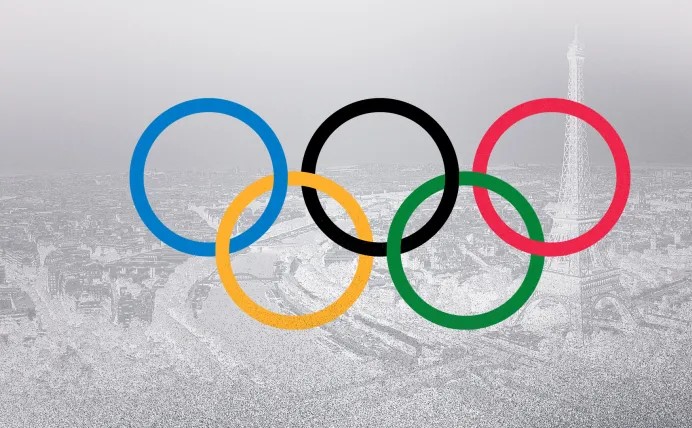
Structure of the Olympic Games
The Olympics now encompass multiple editions:
- Summer Olympics: Held every four years, featuring warm-weather sports. The 2024 Paris Games included 329 events in 32 sports.
- Winter Olympics: Introduced in 1924 in Chamonix, France, for snow and ice sports. The 2022 Beijing Games had 109 events in 15 disciplines.
- Paralympic Games: For athletes with disabilities, following the Olympics in the same host city since 1988.
- Youth Olympic Games: Launched in 2010 for ages 14-18, promoting education alongside competition.
Each Olympiad cycle begins after the previous Games. The flame-lighting ceremony in Olympia ignites the torch relay, culminating in the cauldron lighting at the opening ceremony.
Opening and closing ceremonies are extravagant, blending national culture, music, and symbolism. Athletes march under their flags, and the Olympic Oath is sworn.
Medals—gold, silver, bronze—are awarded, with national anthems and flag raisings. The IOC prohibits political protests, though enforcement varies.
Olympic Symbols and Traditions
The Olympics are rich in iconography:
- Olympic Rings: Designed by Coubertin in 1913, five interlocking rings represent the continents (Africa, Americas, Asia, Europe, Oceania) united by sport. Colors (blue, yellow, black, green, red, plus white background) encompass all national flags.
- Olympic Flame and Torch Relay: The flame, lit by sunlight in Olympia, symbolizes purity and continuity. The relay, introduced in 1936, carries it to the host city.
- Olympic Motto: “Citius, Altius, Fortius – Communiter” (Faster, Higher, Stronger – Together), updated in 2021 to emphasize unity.
- Olympic Anthem: Composed by Spyridon Samaras for 1896, with lyrics by Kostis Palamas.
- Mascots: Introduced in 1968 (Mexico City’s red jaguar), they represent host culture and appeal to youth.
- Victory Ceremonies: Podium presentations with medals, flowers (since 1932), and national symbols.
These elements foster a sense of tradition and global identity.
Sports and Disciplines in the Olympics
The Olympic program evolves, adding and removing sports to reflect contemporary interests and gender equality. Core principles include widespread practice, global appeal, and anti-doping compliance.
Summer Olympic Sports
- Athletics (Track and Field): The cornerstone, with 48 events. Includes sprints (100m, 200m, 400m), middle-distance (800m, 1500m), long-distance (5000m, 10,000m, marathon), hurdles, relays, jumps (long, triple, high, pole vault), throws (shot put, discus, hammer, javelin), and combined events (decathlon for men, heptathlon for women). Stars like Usain Bolt and Allyson Felix have defined eras.
- Swimming: 37 events, including freestyle (50m to 1500m), backstroke, breaststroke, butterfly, medley, and relays. Michael Phelps holds the record with 23 gold medals.
- Gymnastics: Artistic (14 events: apparatus like vault, bars, beam), rhythmic (for women), and trampoline. Simone Biles revolutionized the sport with her difficulty and advocacy.
- Cycling: Road, track, BMX racing/freestyle, mountain biking. Features endurance and sprint events.
- Team Sports: Basketball, football (soccer), volleyball (indoor/beach), handball, rugby sevens, water polo. These promote teamwork and national pride.
- Combat Sports: Boxing, fencing, judo, karate, taekwondo, wrestling. Emphasize technique and strategy.
- Racket Sports: Badminton, table tennis, tennis.
- Other Individual Sports: Archery, canoeing (sprint/slalom), diving, equestrian (dressage, eventing, jumping), golf, modern pentathlon, rowing, sailing, shooting, skateboarding, sport climbing, surfing, triathlon, weightlifting.
New additions like breakdancing (breaking) in 2024 reflect youth culture.
Winter Olympic Sports
- Skiing: Alpine, cross-country, freestyle, Nordic combined, ski jumping. Features speed and aerial maneuvers.
- Skating: Figure skating, short track, speed skating. Ice dancing adds artistic flair.
- Ice Hockey: Intense team competition.
- Biathlon: Combines cross-country skiing and rifle shooting.
- Bobsleigh, Luge, Skeleton: High-speed sliding sports.
- Curling: Strategic “chess on ice.”
- Snowboarding: Halfpipe, slopestyle, big air, parallel giant slalom.
Winter Games highlight endurance in cold environments.
The IOC aims for gender parity; by 2024, nearly 50% of athletes were women.
The Hosting Process and Economic Impact
Hosting the Olympics is a prestigious but costly endeavor. Cities bid seven years in advance, submitting detailed plans for venues, infrastructure, and sustainability. The IOC evaluates based on feasibility, legacy, and public support.
Successful hosts like Barcelona (1992) transformed urban landscapes, boosting tourism. Others, like Athens (2004), faced debt from underused venues.
Costs can exceed $10 billion, funded by governments, sponsors, and ticket sales. Benefits include job creation, infrastructure upgrades, and global exposure. Critics argue displacement of residents and environmental harm.
Sustainability is now prioritized, with reuse of venues and green initiatives.
Controversies and Challenges
The Olympics have not been without strife:
- Political Boycotts: The 1980 Moscow Games saw a U.S.-led boycott over the Soviet invasion of Afghanistan; the Soviets retaliated in 1984 Los Angeles.
- Doping Scandals: State-sponsored programs, like Russia’s, led to bans and medal stripping. The World Anti-Doping Agency (WADA) combats this.
- Terrorism: The 1972 Munich massacre, where Palestinian militants killed Israeli athletes, highlighted security risks.
- Corruption: IOC bribery scandals in the 1990s prompted reforms.
- Human Rights: Hosts like Beijing (2008/2022) faced criticism over Tibet and Uyghur issues.
- Pandemic Impact: Tokyo 2020, delayed to 2021, was held without spectators due to COVID-19.
- Gender and Inclusion: Historical exclusions gave way to progress, but issues like transgender participation persist.
Despite these, the Olympics endure as a platform for dialogue.
Cultural and Social Significance
The Olympics foster cultural exchange through art exhibitions, youth camps, and educational programs. They inspire global youth, promoting health and values like respect and friendship.
Media coverage amplifies stories of triumph over adversity, like Jesse Owens’s 1936 Berlin victories defying Nazi ideology, or refugees competing under the Olympic flag.
Economically, they drive sponsorships from brands like Coca-Cola and Visa, funding the movement.
The Future of the Olympics
Looking ahead, the Olympics adapt to global changes. The 2028 Los Angeles Games emphasize existing venues for cost-efficiency. Brisbane 2032 focuses on regional development.
Challenges include climate change affecting winter sports and geopolitical tensions. Innovations like e-sports consideration aim to engage younger audiences.
The Olympic Movement’s goal remains uniting the world through sport, embodying humanity’s best aspirations.
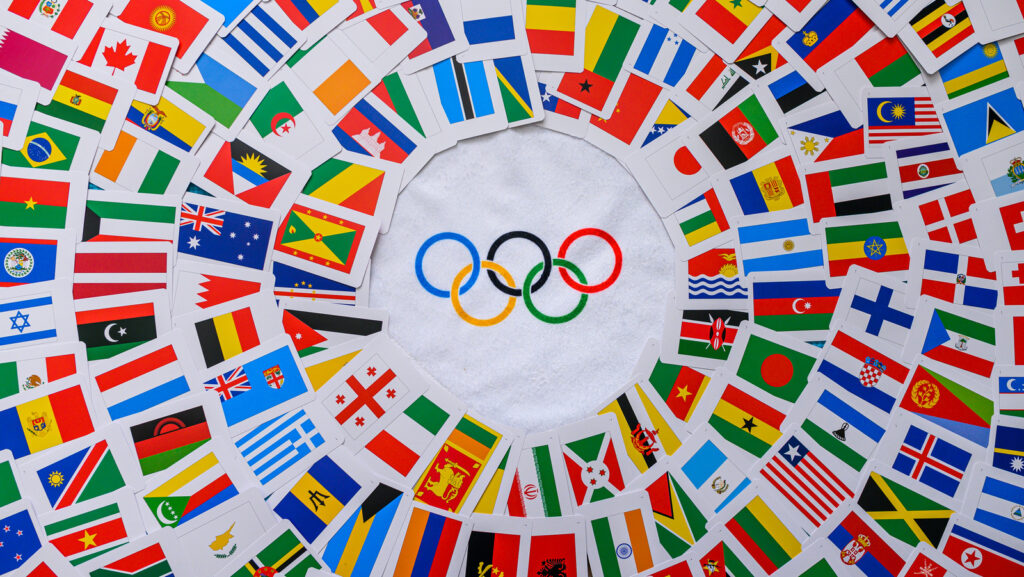
First Participation (Summer Olympics)
| Country/Entity | IOC Code | First Participation (Summer Olympics) |
|---|---|---|
| Afghanistan | AFG | 1936 |
| Albania | ALB | 1972 |
| Algeria | ALG | 1964 |
| American Samoa | ASA | 1988 |
| Andorra | AND | 1972 |
| Angola | ANG | 1980 |
| Antigua and Barbuda | ANT | 1976 |
| Argentina | ARG | 1896 |
| Armenia | ARM | 1996 |
| Aruba | ARU | 1988 |
| Australia | AUS | 1896 |
| Austria | AUT | 1896 |
| Azerbaijan | AZE | 1996 |
| Bahamas | BAH | 1952 |
| Bahrain | BRN | 1984 |
| Bangladesh | BAN | 1984 |
| Barbados | BAR | 1972 |
| Belarus | BLR | 1996 |
| Belgium | BEL | 1896 |
| Belize | BIZ | 1968 |
| Benin | BEN | 1972 |
| Bermuda | BER | 1936 |
| Bhutan | BHU | 1984 |
| Bolivia | BOL | 1936 |
| Bosnia and Herzegovina | BIH | 1992 |
| Botswana | BOT | 1978 |
| Brazil | BRA | 1920 |
| British Virgin Islands | IVB | 1984 |
| Brunei | BRU | 1984 |
| Bulgaria | BUL | 1896 |
| Burkina Faso | BUR | 1972 |
| Burundi | BDI | 1996 |
| Cambodia | CAM | 1956 |
| Cameroon | CMR | 1964 |
| Canada | CAN | 1900 |
| Cape Verde | CPV | 1996 |
| Cayman Islands | CAY | 1976 |
| Central African Republic | CAF | 1968 |
| Chad | CHA | 1964 |
| Chile | CHI | 1896 |
| China | CHN | 1984 |
| Colombia | COL | 1932 |
| Comoros | COM | 1996 |
| Congo (Democratic Republic of the) | COD | 1964 |
| Congo (Republic of the) | COG | 1964 |
| Cook Islands | COK | 1988 |
| Costa Rica | CRC | 1936 |
| Côte d’Ivoire | CIV | 1964 |
| Croatia | CRO | 1992 |
| Cuba | CUB | 1900 |
| Curaçao | CUW | 2012 |
| Cyprus | CYP | 1980 |
| Czech Republic | CZE | 1920 (as Bohemia) |
| Denmark | DEN | 1896 |
| Djibouti | DJI | 1984 |
| Dominica | DMA | 1996 |
| Dominican Republic | DOM | 1924 |
| Ecuador | ECU | 1924 |
| Egypt | EGY | 1912 |
| El Salvador | ESA | 1968 |
| Equatorial Guinea | GEQ | 1984 |
| Eritrea | ERI | 2000 |
| Estonia | EST | 1920 |
| Eswatini | SWZ | 1972 |
| Ethiopia | ETH | 1956 |
| Fiji | FIJ | 1956 |
| Finland | FIN | 1908 |
| France | FRA | 1896 |
| Gabon | GAB | 1964 |
| Gambia | GAM | 1972 |
| Georgia | GEO | 1996 |
| Germany | GER | 1896 |
| Ghana | GHA | 1952 |
| Greece | GRE | 1896 |
| Grenada | GRN | 1972 |
| Guam | GUM | 1988 |
| Guatemala | GUA | 1952 |
| Guinea | GUI | 1968 |
| Guinea-Bissau | GBS | 1996 |
| Guyana | GUY | 1968 |
| Haiti | HAI | 1900 |
| Honduras | HON | 1968 |
| Hong Kong (China) | HKG | 1952 |
| Hungary | HUN | 1896 |
| Iceland | ISL | 1908 |
| India | IND | 1900 |
| Indonesia | INA | 1952 |
| Iran | IRI | 1900 |
| Iraq | IRQ | 1948 |
| Ireland | IRL | 1924 |
| Israel | ISR | 1952 |
| Italy | ITA | 1896 |
| Jamaica | JAM | 1962 |
| Japan | JPN | 1912 |
| Jordan | JOR | 1980 |
| Kazakhstan | KAZ | 1996 |
| Kenya | KEN | 1956 |
| Kiribati | KIR | 2008 |
| Korea (Democratic People’s Republic of) | PRK | 1964 |
| Korea (Republic of) | KOR | 1948 |
| Kosovo | KOS | 2016 |
| Kuwait | KUW | 1964 |
| Kyrgyzstan | KGZ | 1996 |
| Laos | LAO | 1980 |
| Latvia | LAT | 1924 |
| Lebanon | LEB | 1948 |
| Lesotho | LES | 1972 |
| Liberia | LBR | 1952 |
| Libya | LBA | 1964 |
| Liechtenstein | LIE | 1936 |
| Lithuania | LTU | 1924 |
| Luxembourg | LUX | 1900 |
| Madagascar | MAD | 1964 |
| Malawi | MAW | 1972 |
| Malaysia | MAS | 1956 |
| Maldives | MDV | 1988 |
| Mali | MLI | 1964 |
| Malta | MLT | 1928 |
| Marshall Islands | MHL | 2008 |
| Mauritania | MTN | 1984 |
| Mauritius | MRI | 1984 |
| Mexico | MEX | 1900 |
| Micronesia | FSM | 2000 |
| Moldova | MDA | 1996 |
| Monaco | MON | 1920 |
| Mongolia | MGL | 1964 |
| Montenegro | MNE | 2008 |
| Morocco | MAR | 1960 |
| Mozambique | MOZ | 1984 |
| Myanmar | MYA | 1948 |
| Namibia | NAM | 1992 |
| Nauru | NRU | 1996 |
| Nepal | NEP | 1964 |
| Netherlands | NED | 1900 |
| New Zealand | NZL | 1908 |
| Nicaragua | NIC | 1968 |
| Niger | NIG | 1964 |
| Nigeria | NGR | 1952 |
| North Macedonia | MKD | 1996 |
| Norway | NOR | 1900 |
| Oman | OMA | 1984 |
| Pakistan | PAK | 1948 |
| Palau | PLW | 2000 |
| Palestine | PLE | 1996 |
| Panama | PAN | 1948 |
| Papua New Guinea | PNG | 1976 |
| Paraguay | PAR | 1968 |
| Peru | PER | 1900 |
| Philippines | PHI | 1924 |
| Poland | POL | 1924 |
| Portugal | POR | 1912 |
| Puerto Rico | PUR | 1948 |
| Qatar | QAT | 1984 |
| Romania | ROU | 1900 |
| Rwanda | RWA | 1984 |
| Saint Kitts and Nevis | SKN | 1984 |
| Saint Lucia | LCA | 1984 |
| Saint Vincent and the Grenadines | VIN | 1988 |
| Samoa | SAM | 1984 |
| San Marino | SMR | 1960 |
| São Tomé and Príncipe | STP | 1996 |
| Saudi Arabia | KSA | 1972 |
| Senegal | SEN | 1964 |
| Serbia | SRB | 1912 (as part of Yugoslavia) |
| Seychelles | SEY | 1980 |
| Sierra Leone | SLE | 1968 |
| Singapore | SIN | 1948 |
| Slovakia | SVK | 1994 |
| Slovenia | SLO | 1992 |
| Solomon Islands | SOL | 1984 |
| Somalia | SOM | 1972 |
| South Africa | RSA | 1904 |
| South Sudan | SSD | 2012 |
| Spain | ESP | 1900 |
| Sri Lanka | SRI | 1948 |
| Sudan | SUD | 1960 |
| Suriname | SUR | 1960 |
| Sweden | SWE | 1896 |
| Switzerland | SUI | 1896 |
| Syria | SYR | 1948 |
| Chinese Taipei | TPE | 1964 |
| Tajikistan | TJK | 1996 |
| Tanzania | TAN | 1964 |
| Thailand | THA | 1952 |
| Timor-Leste | TLS | 2000 |
| Togo | TOG | 1972 |
| Tonga | TON | 1984 |
| Trinidad and Tobago | TTO | 1948 |
| Tunisia | TUN | 1960 |
| Turkey | TUR | 1908 |
| Turkmenistan | TKM | 1996 |
| Tuvalu | TUV | 2008 |
| Uganda | UGA | 1956 |
| Ukraine | UKR | 1996 |
| United Arab Emirates | UAE | 1984 |
| United Kingdom | GBR | 1896 |
| United States | USA | 1896 |
| Uruguay | URU | 1924 |
| Uzbekistan | UZB | 1996 |
| Vanuatu | VAN | 1988 |
| Venezuela | VEN | 1948 |
| Vietnam | VIE | 1952 |
| Virgin Islands (U.S.) | ISV | 1968 |
| Zambia | ZAM | 1964 |
| Zimbabwe | ZIM | 1980 |
| Refugee Olympic Team | ROT | 2016 |
This list encompasses all recognized NOCs eligible to participate in the Olympic Games. For the Winter Olympics, the number is slightly lower (around 90-100 NOCs), as not all countries have winter sports programs. Five countries have participated in every Summer Olympics: Australia, France, Great Britain, Greece, and Switzerland.
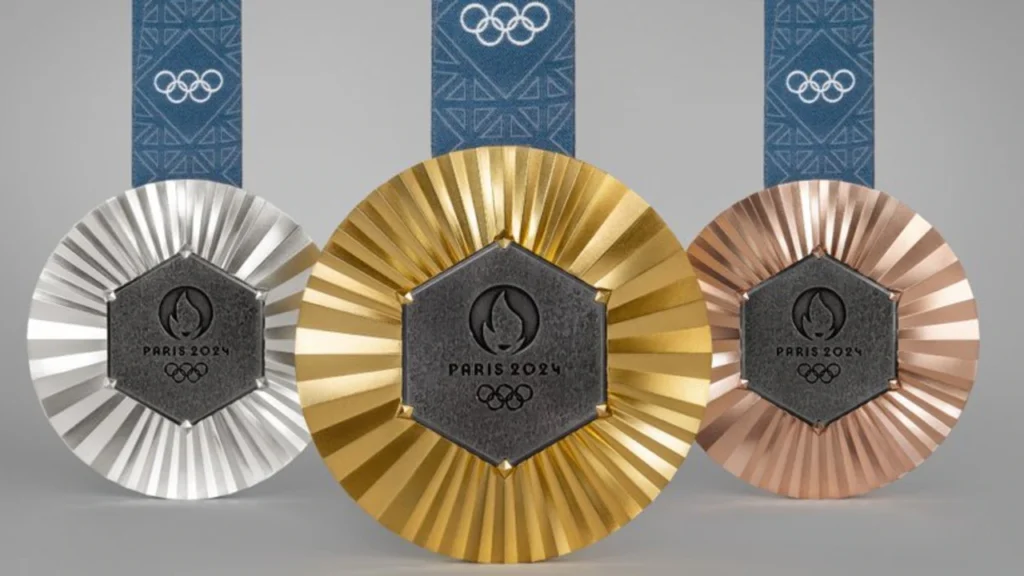
Olympic Legends and Memorable Moments
No discussion is complete without highlighting icons:
- Ancient Heroes: Milo of Croton, six-time wrestling champion; Leonidas of Rhodes, 12-time running victor.
- Modern Pioneers: Jim Thorpe (1912 pentathlon/decathlon gold, later stripped then restored); Paavo Nurmi, the “Flying Finn” with nine golds.
- Endurance Feats: Emil Zátopek’s 1952 triple (5000m, 10,000m, marathon); Abebe Bikila’s barefoot 1960 marathon win.
- Barrier Breakers: Fanny Blankers-Koen, “Flying Housewife” with four 1948 golds; Wilma Rudolph overcoming polio for 1960 sprints.
- Dominators: Carl Lewis (nine golds in jumps/sprints); Larisa Latynina (18 gymnastics medals); Katie Ledecky in swimming.
Memorable moments include the 1968 Black Power salute by Tommie Smith and John Carlos, protesting racial injustice; Kerri Strug’s 1996 vault on an injured ankle; and Mo Farah’s double-double in distance running.
These stories humanize the Games, showing vulnerability amid excellence.
Olympic Venues and Architecture
Venues are architectural marvels:
- Panathenaic Stadium: Athens 1896/2004, ancient marble structure.
- Bird’s Nest: Beijing 2008, iconic steel lattice.
- Olympic Stadium Montreal 1976: Known for its retractable roof (never fully functional).
- Aquatics Centre London 2012: Zaha Hadid’s wave-like design.
Sustainable designs, like Tokyo’s timber stadium, set trends.
The Role of Technology in the Olympics
Technology enhances fairness and spectacle:
- Timing Systems: Photo finishes and electronic sensors for precision.
- VAR in Sports: Video assistant referees in football.
- Anti-Doping Tech: Advanced testing for substances.
- Broadcasting: Drones, 360-degree cameras for immersive viewing.
- Training Aids: Wearables and AI for performance analysis.
Ethical debates arise over enhancements like high-tech swimsuits (banned in 2010).
Environmental and Sustainability Efforts
The IOC’s Agenda 2020+5 promotes sustainability:
- Carbon Neutrality: Paris 2024 aims for low emissions.
- Venue Reuse: Over 95% of Paris venues are existing or temporary.
- Biodiversity: Protecting local ecosystems.
Challenges include travel emissions from global participants.
Youth and Educational Programs
The Youth Olympic Games (YOG) educate on healthy lifestyles, with cultural festivals. Programs like Olympic Values Education reach schools worldwide.
Paralympics: Inclusion and Inspiration
Originating in 1948 as the Stoke Mandeville Games, the Paralympics parallel the Olympics since 1960. Classifications ensure fair competition across disabilities: visual, intellectual, physical.
Stars like Tatyana McFadden (wheelchair racing) and Trischa Zorn (swimming) inspire. The Paralympics promote accessibility and challenge stereotypes.
Economic Analysis of Hosting
Hosting boosts GDP short-term through construction and tourism. Long-term legacies vary: Sydney 2000 succeeded with harbor revitalization; Rio 2016 struggled with corruption and underuse.
Sponsorship revenue exceeds $1 billion per Games, supporting IOC grants to national committees.
Global Participation and Diversity
Over 200 nations participate, more than UN members, including territories like Puerto Rico. The Refugee Olympic Team, since 2016, represents displaced athletes.
Diversity increases: More women, LGBTQ+ visibility (e.g., Tom Daley), and cultural representation.
Olympic Art and Culture
From 1912-1948, art competitions awarded medals in architecture, literature, music, painting, sculpture. Today, cultural programs integrate arts.
Anti-Doping and Fair Play
WADA, founded 1999, oversees testing. Sanctions include lifetime bans for repeat offenders. Education prevents use.
Media and Broadcasting Evolution
From radio in 1924 to 4K streaming, coverage reaches 3.5 billion viewers. Social media amplifies athlete stories.
Geopolitical Role
Olympics as soft power: Ping-pong diplomacy (1971 U.S.-China) preceded relations; 2018 PyeongChang united Koreas briefly.
Future Innovations
Potential additions: Esports, urban sports. Climate-adaptive scheduling.
Conclusion
The Olympic Games, from ancient rituals to modern mega-events, encapsulate human endeavor. They challenge bodies, unite cultures, and inspire generations. Despite imperfections, their legacy of peace and excellence endures, promising a brighter future through sport.

